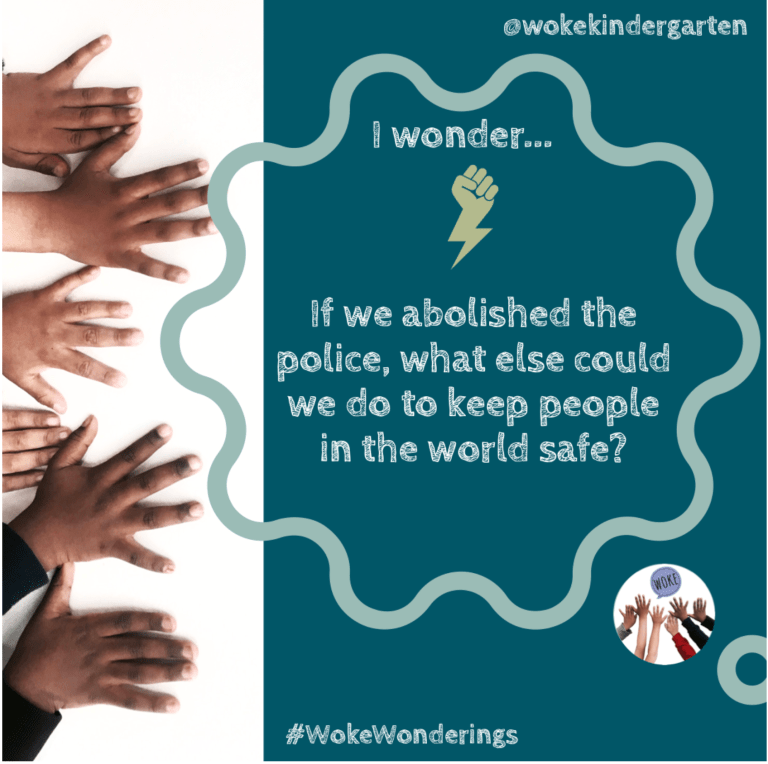If I could display one paper that vividly demonstrates the infiltration of ideology into biology education, it would be the one below, published last May in Bioscience. The article tells instructors in college biology classes how to teach the subject so that teachers do not “harm” the students by making them feel “unwelcome”, by implying that their behavior—particularly that related to sex and their gender—is “unnatural”, or by failing to represent the students’ identities while teaching biology.
You can read the paper by clicking on the screenshot below, or get a pdf here.

The gist of the paper is provided by its abstract:
Sexual and gender minorities face considerable inequities in society, including in science. In biology, course content provides opportunities to challenge harmful preconceptions about what is “natural” while avoiding the notion that anything found in nature is inherently good (the appeal-to-nature fallacy). We provide six principles for instructors to teach sex- and gender-related topics in postsecondary biology in a more inclusive and accurate manner: highlighting biological diversity early, presenting the social and historical context of science, using inclusive language, teaching the iterative process of science, presenting students with a diversity of role models, and developing a classroom culture of respect and inclusion. To illustrate these six principles, we review the many definitions of sex and demonstrate applying the principles to three example topics: sexual reproduction, sex determination or differentiation, and sexual selection. These principles provide a tangible starting place to create more scientifically accurate, engaging, and inclusive classrooms.
The principles, which I’ll give below with quotes, are designed to buttress the appeal to nature (closely related to the “naturalistic fallacy”)—the idea that a person’s identity is good because it is analogous to what we find in nature. Thus there is great emphasis on the diversity of sexual reproduction and a de-emphasis of generalizations (e.g. promiscuous males vs. picky females) that, the authors say, harm people. (My answer, below, is to teach that the appeal-to-nature fallacy is fallacious for a reason: it draws moral principles from biological facts, which is a bad way to proceed.) Although the authors claim to be avoiding the appeal to nature, their whole lesson can be summarized in this sentence:
Human diversity is good because we see similar diversity in nature.
The explicit aim of this pedagogy is not just to teach biology but largely to advance the authors’ social program. As they say (my emphasis):
At their most harmful, biology courses can reinforce harmful stereotypes, leaving students with the impression that human gender and sexual diversity are contrary to “basic biology” or even that they themselves are “unnatural.” At their most beneficial, biology courses can teach students to question heteronormative and cisnormative biases in science and society. On a larger scale, by encouraging an inclusive and accurate understanding of gender and sex in nature, biology education has the power to advance antioppressive social change.
My response would be “at their most beneficial, biology courses teach students what biology is all about, to inspire them to learn biology, and to learn the methods by which we advance our understanding of biology. It is not to advance antioppressive social change, which, of course, depends on who is defining ‘antioppressive’.”
Here are the authors’ six principles. The characterizations are mine:
1). Diversity first. The authors strongly believe that educators should teach about the diversity of nature before giving generalizations. So, for example, instead of discussing the prevalence of maternal over paternal care in animals, or of the preponderance of decorations, colors, and weapons in males of various species compared to females of those species, you should show the wonderful diversity of nature: you talk about clownfish that can change sex when the alpha female dies, about seahorses, in which females are the decorated se (but for good reasons that conform to a generalization), and discuss some groups of humans in which males give substantial parental care.
This is done explicitly to be “inclusive”:
Recent work focused specifically on undergraduate animal behavior courses has demonstrated that presenting diversity first does not negatively affect learning objectives (Sarah Spaulding, University of Louisville, Louisville, Kentucky, personal communication, 9 April 2019).
That’s some reference, eh?
I would argue that the great generalities should be taught first, and the exceptions later, whose interests rests largely on the fact that they are exceptions. Gaudy female seahorses are of interest mainly because in seahorse reproduction, the males get pregnant (they carry eggs in their pouches), there are more females with eggs than males to carry them, and therefore, in a form of reverse sexual selection, the males are choosy instead of the females, who compete for males to carry their eggs. It makes little sense to me to teach the exceptions before the rules, or the diversity before the generalizations, unless you do so to advance an ideological program.
Although the authors say that teaching generalizations first itself perpetuating the appeal-to-nature fallacy by implying what is “normal”, they themselves perpetuate the same fallacy by pointing out exceptions that are said to correspond to biological phenomena, too. Here they are discussing their “teach diversity first” principle:
A second potential concern is that this principle, if it is simplistically applied, will perpetuate the appeal-to-nature fallacy—that is, the argument that anything found in nature is inherently good (Tanner 2006). This is problematic, because it can suggest that students need examples of specific behaviors or biologies in nature to validate human experiences or, alternatively, that anything found in nature is justified in humans. We emphasize that presenting diversity first should only demonstrate that we should expect diversity, including among humans, but this does not present a value argument. Rather, it combats the incorrect assumption that nonbinary categorizations, intersex characteristics, same-sex sexual behavior, transgender identities, gender nonconforming presentation and behavior, and so on are unnatural, which is, itself, often used against LGBTQIA2S + people in an appeal-to-nature argument (e.g., Newman and Fantos 2015).
Note that they are using the appeal to nature fallacy: diversity is good because it is seen in nature. Thus LGBTQIA2S+ should not be demonized because sexual diversity occurs in nature. But these brands of diversity are not are not comparable. As I wrote when reviewing Joan Roughgarden’s book Evolution’s Rainbow:
But regardless of the truth of Darwin’s theory, should we consult nature to determine which of our behaviours are to be considered normal or moral? Homosexuality may indeed occur in species other than our own, but so do infanticide, robbery and extra-pair copulation. If the gay cause is somehow boosted by parallels from nature, then so are the causes of child-killers, thieves and adulterers. And given the cultural milieu in which human sexuality and gender are expressed, how closely can we compare ourselves to other species? In what sense does a fish who changes sex resemble a transgendered person? The fish presumably experiences neither distressing feelings about inhabiting the wrong body, nor ostracism by other fish. In some baboons, the only males who show homosexual behaviour are those denied access to females by more dominant males. How can this possibly be equated to human homosexuality?
So Zemenick et al. do advance value argument—an argument designed to shows “diverse” students that they are not abnormal and should not feel bad about themselves. While I agree that we shouldn’t denigrate students for their sexual orientation or gender identity, or any other trait, you don’t need to teach in a way to validate the identity of all students While the authors do give caveats about saying that teaching diversity first “does not present a value argument”, in fact it does.
2.) Present the social and historical context of science. This is another way to prevent students from being “harmed” by infusing biological history and data with ideological lessons. One example:
There are still numerous issues with testing for and reporting sex differences in scientific research, prompting calls for increased training in this area (Garcia-Sifuentes and Maney 2021). Furthermore, it is increasingly recognized that testing for only binary sex differences excludes and harms many others that fall outside this binary (Reisner et al. 2016).
Would that harm still be done if the teacher notes that more than 99.9% of individuals conform to the “binary sex difference”? We should not tailor what we teach to the goal of affirming everybody’s identity. That is therapy, not biology.
3.) Use inclusive language while teaching. This has the same goal as above, to avoid words that make some students feel “excluded”:
Culturally loaded sex- and gender-related terms are often used in biology classrooms without careful thought and discussion. This is especially true of familiar terms, such as male, female, sex, paternal, maternal, mother, and father. Students and instructors alike may fail to notice that these terms imply and affirm cultural norms around sex, gender, and family structure that can be inaccurate and harmful. We therefore suggest, whenever possible, using inclusive, precise terminology that does not assume sex and gender binaries or traditional, nuclear family structures.
. . .Encouraging students to develop an inquiring attitude toward culturally loaded biology language may reduce the harm of these terms and help students develop important critical-thinking skills (Kekäläinen and Evans 2018).
For sex- and gender-related biology terms, we believe it is imperative to provide definitions that are as inclusive, accurate, and precise as possible.
They don’t mention that precisely defining terms like “biological sex” may not be “inclusive.” In fact, every time I give the biological definition of sex, based on gamete type, I get considerable feedback for having “harmed” people. But biology is not, and should not be, a form of social work.
4.) Show the iterative process of science. This is supposed to emphasize that science is “nonlinear and iterative”, though I’m not sure what they mean. Regardless, it has an ideological aim:
Showing the iterative process of science allows students to see how biological models often begin simple and general, to the exclusion of sexual diversity. As models are developed further, with more data and collaboration, they are often refined to encompass more complexity and diversity. For example, past sexual selection theory emphasized how sex differences in gamete size (anisogamy) and differential reproductive investment can drive the evolution of sexual dimorphic behaviors and morphology (box 4). Despite evidence suggesting that humans may be only weakly sexually dimorphic (Reno et al. 2003), early evolutionary models of animal behavior contributed to biological essentialist ideas about human males being inherently highly competitive and human females being driven primarily by the need to rear young.
Well, we may be “only weakly sexually dimorphic” compared to, say, gorillas, but we’re a lot more sexually dimorphic than chipmunks. The fact is that human males are indeed inherently highly competitive and risk-taking—a result of sexual selection in our ancestors—and human females more infant-rearing-oriented than males, largely but not entirely a result of natural selection (there is, after all, social pressure for females to conform to those roles).
The solution to this whole mishigass is not to restructure biology courses in a Rawlsian way to avoid “harming” the most easily offended individual, but simply to teach the biology you think is important, point out that there is variation, that some of that (like the ornaments of female seahorses) actually proves the generalizations, but, above all, tell the students ONCE or TWICE that they should not draw any lessons about “right versus wrong” or “good versus bad” from biological knowledge, for that makes morality liable to change when biological knowledge changes. Yes, perhaps you can buttress the identities of gay people by saying that female bonobos engage in genital rubbing to strengthen bonds, but does it also buttress bullies and aggressors to tell them that chimpanzees also engage in deadly intra-group warfare? For every variant that buttresses someone’s identity, I can point out a variant that exemplifies something we don’t want people to do.
5.) Present students with diverse role models. They mean “individuals from marginalized groups” here, presumably racial groups rather than individuals in the LGBTQ+ categories. While I have no beef against role models, their absence is not the main reason why minority students drop out of STEM programs. The reason, for which we have plenty of data, is that those students aren’t well prepared for the courses, don’t do well, see a lack of success in their futures, and switch to other majors. But Zemenick et al. emphasize the “look like me” aspect:
One reason students from marginalized groups leave STEM majors is a lack of relatable and supportive role models (Hurtado et al. 2010). Role models inspire students, provide psychological support, and help them adopt a growth mindset about intelligence (Koberg et al. 1998). For students from marginalized groups in particular, relatable role models can help them perform better (Marx and Roman 2002, Lockwood 2006). Therefore, a simple way to support LGBTQIA2S + students—who leave STEM majors at higher rates than their straight peers (Hughes 2018)—is to expose them to relatable role models from diverse backgrounds and identities.
I suggest that you check out the Hurtado et al. reference to see the evidence for “relatable and supportive role models” playing a major role in minority students dropping out of STEM. I can imagine that students who feel supported might tend to stay in STEM, but what the authors are suggesting is to beef up teaching so that more importance is given to the work of minority scientists:
Despite the importance of relatable role models for marginalized students, most scientists featured in biology curricula are white, heterosexual, cisgender men, and, as a result, marginalized students often do not see their identities represented (Wood et al. 2020). Instructors should be intentional about introducing their students to biologists from diverse backgrounds and identities, and there are several approaches instructors can take to integrate this into biology courses. For example, instructors can complement or replace content about historical scientists with content about diverse contemporary scientists, or they can assign a small project in which the students research relatable role models.
What Wood et al. (2020) does show, as we’d expect from history, a lack of minority representation in the history of science. Though that representation is at odds with the kind of people doing science now, remember that textbooks concentrate on important discoveries of the past, and those involved mainly white heterosexual cisgender men. But that’s not because textbook authors are bigots. As the participation of minorities in science increases, so will their representation in future textbooks and instruction.
I wonder here, as I alluded to above, whether this problem applies to LGBTA+ people, also seen as “marginalized.” I doubt it, for gay+ people are pretty well represented in science (though I have no data on this issue!), and do we really want to talk about the sexual orientation of famous scientists as a way to avoiding LGBTQ+ people? The key here is that “represented” means “looks like”, and that directly implies race is the important factor, not other criteria for marginalization.
6.) Develop a classroom culture of respect and inclusion. I certainly think that all students should be respected in class: treated as future colleagues whose questions and views should be handled with respect, even when the students are wrong. As I tell my students, “There is no such thing as a stupid question.” One should cultivate an atmosphere in which no student should be fearful of expressing their views, asking questions, or challenging the teacher. But this is simple civility in pedagogy.
But that’s not what the authors mean:
Instructors can work to make all students feel welcome by building professional relationships with students that are founded on respect and nonjudgement. To develop and nurture such relationships, instructors must confront their unconscious biases, such as homophobia, transphobia, or interphobia, through education and self-reflection. Consider attending LGBTQIA2S + sensitivity training, often offered by campus pride and GSA (gay–straight or gender and sexuality alliance) centers.
. . . By developing an awareness of how LGBTQIA2S + identity affects students’ experiences of the biology classroom and by engaging with students empathetically and authentically, instructors can create meaningful and inclusive learning experiences (Dewbury and Brame 2019).
Somewhere along the line, the authors of this paper have forgotten that the purpose of biology class is to teach biology as it is understood today, not to coddle the identities of students. My solution, once again, it simply to say at the beginning of the class, and perhaps reemphasize it, that we are to draw no moral or social lessons about humans from the facts of biology, though biological facts can serve to prop up or militate against some moral views (like those based on utilitarianism). To quote Hitchens, the teach-biology and denigrate the “appeal to nature” view is enough for me, and I don’t need a second. I don’t believe, and there is no evidence adduced, for statements like the following:
Biology classrooms represent powerful opportunities to teach sex- and gender-related topics accurately and inclusively. The sexual and gender diversity displayed in human populations is consistent with the diversity that characterizes all biological systems, but current teaching paradigms often leave students with the impression that LGBTQIA2S + people are acting against nature or “basic biology.” This failure of biology education can have dangerous repercussions. As students grow and move into society, becoming doctors, business people, politicians, parents, teachers, and so on, this misconception can be perpetuated and weaponized. Our hope is that this article helps to combat that scenario by stimulating the adoption of accurate and inclusive teaching practices.
Which professors are teaching in a way that makes students feel that they’re acting “unnaturally”? I would claim that the authors are offering a solution to a non-problem.
I agree that all topics should be taught accurately, but if some students feel “non-included” by facts taught in a civil manner in college biology, that is not up to the instructor to fix. Again, a two-minute explication of the fallacy of the appeal to nature is all that’s needed, not a schedule of “LGBTQIA2S + sensitivity training.”
The whole problem with this form of pedagogy is seen in the “author biographical” section of the paper, which I reproduce in toto:
Author Biographical
Ash T. Zemenick is a nonbinary trans person who grew up with an economically and academically supportive household to which they attribute many of their opportunities. They are now the manager of the University of California Berkeley’s Sagehen Creek Field Station, in Truckee, California, and are a cofounder and lead director of Project Biodiversify, in the United States. Shaun Turney is a white heterosexual transgender Canadian man who was supported in both his transition and his education by his university-educated parents. He is currently on paternity leave from his work as a non–tenure-track course lecturer in biology. Alex J. Webster is a cis white queer woman who grew up in an economically stable household and is now raising a child in a nontraditional queer family structure. She is a research professor in the University of New Mexico’s Department of Biology, in Albuquerque, New Mexico, and is a director of Project Biodiversify, in the United States. Sarah C. Jones is a disabled (ADHD) cis white queer woman who grew up in a supportive and economically stable household with two university-educated parents. She is a director of Project Biodiversify, and serves as the education manager for Budburst, a project of the Chicago Botanic Garden, in Chicago, Illinois, in the United States. Marjorie G. Weber is a cis white woman who grew up in an economically stable household. She is an assistant professor in Michigan State University’s Plant Biology Department and Program in Ecology, Evolution, and Behavior, in East Lansing, Michigan, and is a cofounder and director of Project Biodiversify, in the United States.
Why is this there? What purpose does it serve except to signal the virtue (or social consciousness) of the authors? Most important, what on earth does it have to do with biology—or with this paper?































